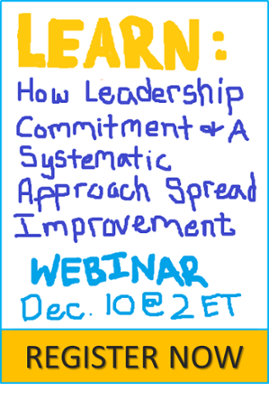 A flat organizational structure with few or no levels of middle management can be extremely conducive to innovation and improvement. Well-trained, engaged workers can be more creative and collaborative when they are more directly involved in the decision making process and not separated from leadership by layers of management. However, without good planning and accountability practices, ambiguity about who is responsible for what can become problematic and allow improvement tasks to fall through the cracks. Catchball can help.
A flat organizational structure with few or no levels of middle management can be extremely conducive to innovation and improvement. Well-trained, engaged workers can be more creative and collaborative when they are more directly involved in the decision making process and not separated from leadership by layers of management. However, without good planning and accountability practices, ambiguity about who is responsible for what can become problematic and allow improvement tasks to fall through the cracks. Catchball can help.
What is Catchball?
Catchball has been called, “simple, but not easy.” The idea is fairly straightforward. Regardless of who starts an improvement or planning project, that person defines the purpose, goals, background, and challenges, and then “throws” them to other stakeholders for opinions, help and action. At every point it is clear who has ownership of the idea (ball). The ball can bounce around back and forth among all of the players until the improvement or plan is complete.
How Catchball Helps Flat Organizations
Accountability:
In organizations without a rigid hierarchy or distinct departments, it can be difficult to determine exactly who has responsibility for what. Improvement projects can stall while everyone waits for someone else to take action.
Catchball combats this challenge by ensuring that each improvement project has an “owner” at any given point in time. It is particularly effective when supported by technology that gives all of the players visibility into the current status of each project.
Collaboration:
Organizations that choose a flat structure do so, in most cases, to encourage the free flow of ideas among every member of the team. They want to eliminate barriers to collaboration and innovation.
Catchball is the perfect complement to this approach. People work together, with feedback and effort flowing back and forth until difficult problems are solved.
Engagement:
One of the challenges faced by flat organizations is that employees have fewer managers with the responsibility to motivate and engage them. Employees must, therefore, be motivated from within and be emotionally invested in the success of the organization as well as their own achievements.
Catchball gives everyone the opportunity to play an active role in the improvement and planning process. While each person holds the ball, the spotlight is on them, and they have the opportunity to shine.
If your organization has a flat structure, consider the brilliantly simple practice of Catchball as a way to support and accelerate your improvement initiatives.



Add a Comment